Resources
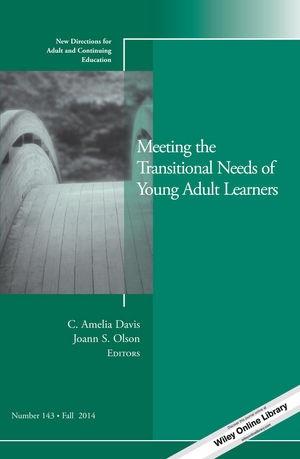
Part of the series “New Directions for Adult and Continuing Education,” Meeting the Transitional Needs of Young Adult Learners is the first entry to address young adult learners in thirty years. As such, it is a welcome contribution to the series, as well as a valuable resource in its own right. Faculty teaching traditional undergraduates, as well as those in continuing and adult education roles, will find much of value here. The terms “young adult” and “youth” are used across the essays in the volume, though without a single common definition. Generally, “young adult” refers to individuals from ages eighteen to twenty-five, though with some flexibility on both sides; adult education may begin at sixteen, as Davis notes (chapter 6). Chapter 1, by Joanna Wyn, introduces several key concepts that recur in subsequent chapters. Wyn offers a nice overview of the scholarship of youth transitions, new adulthood, and age. She argues that the “metaphor of transition” — a frequent feature in discussions of young adulthood — should be replaced with a “metaphor of belonging” that emphasizes relationships and connections (9). Indeed, many of the following chapters take up this call for an emphasis on relationships and belonging. Chapters 2 through 8 follow a basic model of identifying a specific community, reviewing the literature, data, or relevant theoretical work relating to that community, and concluding with suggestions for instructors. Thus Brendaly Drayton (chapter 2) introduces and theorizes cultural difference, with special attention to ethnic difference and the experience of young adults positioned in multiple cultures. Drayton encourages instructors to use texts from a range of cultures as well as collaborative learning practices. Rongbing Xie, Bisakha (Pia) Sen, and E. Michael Foster (chapter 3) offer a similar introduction to “vulnerable youth,” a broad category that encompasses socio-economic disparities, mental health, welfare, and involvement with the justice system. Noting the problem of youth who “age out” of social services, they call on educators to be informed and competent allies for vulnerable youth and to provide social support. Jessica Nina Lester (chapter 4) makes a similar argument with respect to “youth with dis/ability labels.” The pedagogical emphasis in these chapters is on the affective and relational, encouraging instructors to engage beyond course material. Steven B. Frye’s contribution addresses young adults in faith communities (chapter 5). Instructors in confessional contexts may find his insights helpful; in other contexts, less so. The final three chapters are the work of the editors, C. Amelia Davis and Joann S. Olson. Davis (chapter 6) discusses adult education programs as they serve young adult learners, and offers some helpful suggestions for strengthening these programs. Olson (chapter 7) takes up the transition from school to workplace, arguing that educators can intentionally create classroom and school experiences that prepare students for, and ease the transition to, the workplace. She also offers a number of useful examples, including discussing class assignments. A final chapter by Olson and Davis (chapter 8) offers a concise overview of key themes from the preceding chapters. This is a valuable collection of essays, which much to offer all educators working with young adults.
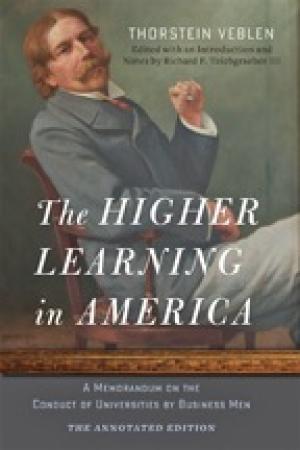
While often repeated, at least by scholars of the original 1918 document, it bears retelling here that the original subtitle of Thorstein Veblen’s The Higher Learning in America was “A Study of Total Depravity.” And while such language was sanitized for publication the author’s irritation with the “bootless meddling” of governing boards and the “skilled malpractice” of university presidents, was no less strident and prevalent throughout his text. The recently published, first-ever annotated edition of Veblen’s important – and, unfortunately, still timely – report put this reviewer in mind of much more recent such studies, and thus will be reviewed here in the context of these recent contributions to what Veblen called “the professors’ literature of protest” (for example, see Ginsberg [The Fall of the Faculty, Oxford University Press, 2011] and Menand [The Marketplace of Ideas, Norton, 2010]). Richard F. Teichgraeber’s excellent “Introduction,” as well as his editorial notes throughout, make this timeliness clear. Veblen retrospectively joins a host of prominent scholars who have engaged a broad institutional critique of higher education, and he was by no means the first to caution against the threat to the American university’s independence, by its uncritical adoption of the methods – and its serving the needs – of the business community. In this Veblen presages the pessimistic diagnosis of American undergraduate education offered in 1996 by the late Bill Readings in his much-quoted University in Ruins (Cambridge, Mass., Harvard University Press), in which the author excoriated the contemporary American “corporatized” university as a “ruined institution” hopelessly “enmeshed in consumerist ideology” (Veblen’s “salesmanlike proficiency”). Many have since echoed this sentiment, not least among them Harvard professor, James Engell, who in 1998 painted a similarly discouraging picture of the current state of affairs for undergraduate study, calling particular attention to higher education’s rush to fall in line with business and government calls for greater “relevance,” “application,” and “preparation for working life” outside the academy – all measured by metrics of cost, efficiency, and productivity. In an article entitled “The Market-Model University: Humanities in the Age of Money,” (Harvard Magazine) Engell cites persuasive evidence that economic pressures have negatively, if not irrevocably, impacted American collegiate education – for instance, declining enrollments in traditional liberal arts disciplines,with the corresponding reality for faculty equally gloomy: the lowest faculty salaries compared to colleagues in the pre-professional disciplines (full-throatedly denounced by Veblen), the most onerous teaching loads (“notoriously underpaid and so scantily filled as seriously to curtail their working capacity,” according to Veblen), and the least academically prepared and intellectually engaged students. Such a move toward “aggressive mediocrity,” with faculty “managed according to the principles of the consumer-driven marketplace,” as Veblen put it in 1918, has resulted, as essayist and critic William Deresiewicz would have it, in American higher education “slouching toward a glorified form of vocational training” (“Faulty Towers: The Crisis in Higher Education,” The Nation, 2011). “The liberal arts university,” argues Deresiewicz, “is becoming the corporate university, its center of gravity shifting to technical fields where scholarly expertise can be parlayed into lucrative business opportunities.” “Vocational training,” Veblen had long ago warned, “is training for proficiency in some gainful occupation, and has no connection with the higher learning” (168). These and numerous other recent interventions, all resonant of Veblen’s prophesies, have contributed to a complex and increasingly polarizing debate on the future of higher education in America. They argue that an increasingly career-focused (market-driven) education has pressured colleges – even those with strong liberal arts traditions – to become more occupation-focused, and they offer a spirited defense of the value of liberal (Veblen’s “higher”) education on its own terms against the encroachments of economic justification, assessment paradigms, the uncritical embrace of digital technology, and the general misalignment between scholars and professional higher education. “The underlying businesslike presumption accordingly appears to be that learning is a merchantable commodity, to be produced on a piece-rate plan, rated, bought and sold by standard units, measured, counted and reduced to staple equivalence by impersonal, mechanical tests,” Veblen writes in 1918 (190). While in tone Veblen implicitly seems to hold out some hope that genuine compromise could be made between the needs of “higher learning” and the demands of the marketplace, he offers little in the way of solution beyond indignant critique. What he does suggest is that any effort at meaningful reform in higher education will have to originate from within the domain itself, and from a clear understanding of what constitutes academic organizational culture. Any such understanding will have to begin internally with a frank reevaluation of basic missions and standards, systems of reward and sanction, and the patterns of decision-making and praxis. To what degree, we need to ask, are the social realities of higher education structured, shared, and perhaps contested by the participants in the organization? Yet the domain of higher education, if it is to survive current public scrutiny, must look externally as well. It must consider, for example, how it defines and what its attitude is toward its external environment – that is, those critical forces that can positively or negatively influence the profession’s effectiveness. The imposition of standards set outside the university goes counter to the concept of the university as an autonomous institution that sets its own standards, free from external pressures. The result is an inevitable clash of views, then, regarding the relationship between the university providing the service and the society that demands it. And to the extent that university performance is measured by external institutions, autonomy is compromised. The question, presciently suggested by Veblen, is should the profession of higher education engage with its external environment in order to give expression to the latter’s interests, ideas, and needs which are marginalized by self-protective “ivory tower” mentality? If yes, to what extent? Some believe this type of outward focus will ensure the power of the organization to engage practically with the environment’s present concerns in a way that addresses a wider social base as “public” – the true measure of accountability. Others believe this “service to the community” leads only to myopic special interest, bowing to temporary fluctuations in social climate and environmental (political and economic) influences. Until we agree on what the profession is now, and how institutional priorities should be aligned with public needs, it will be difficult to determine how higher education is to engage with its environment, and what direction its leaders are to take.
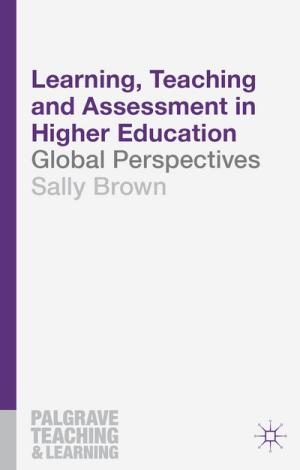
This global study of teaching, learning, and assessment goes beyond the typical single country context to extend to good pedagogical practice on six continents.The argument of each chapter is supported by examples of good practice accounts from around the world, a collection that forms a refreshing change from a generic case study model. Although the examples lean most heavily toward English-speaking institutions and classrooms, there is significant attention paid to various elements of pedagogy from many cultural perspectives. The author takes great care throughout the book to consider all elements of the changing higher education landscape, including the changing student body, changes in technology, and changes in expectations about the goals of higher education and graduate employability. The twelve chapters of this book take a comprehensive view of diversity in higher education teaching, learning, and assessment. The book opens with a consideration of cultural mores and assumptions that directly affect interactions in higher education. Brown looks both to the past and the future in subsequent chapters, noting pedagogical traditions and innovations in the context of today’s higher education landscape. She argues that we must adjust to a technology-rich world that necessitates more focus on “learning how and learning why than on learning what” (21). Her view of technology in the balance as both a distraction and a valuable addition to certain aspects of both teaching and learning is refreshing, as so many books either glorify or decry technology in classrooms and society. This ability to see things in the balance is one of the greatest strengths of this book: rather than arguing for a “best” way to teaching or learning or assessment, this book offers multiple possibilities from multiple contexts and thus leaves much to the reader to judge based on his or her context and constraints. Brown identifies a few global trends. The most widespread seems to be a move from transmissive to transformative education. She notes that there is a “movement from perceiving the university teacher as an all-knowing, unchallengeable authority figure” (27) and parallel a movement by institutions and disciplines toward encouraging learning outside of the lecture hall. Another trend is teaching toward the multiple literacies expected of a twenty-first century graduate, looking well beyond academic literacy to digital, assessment, and interpersonal literacies (88). Finally, Brown notes that all education needs to think of itself as taking place in a global environment. This book is itself a fine way to encourage broader thinking about pedagogical contexts in higher education: our students are shortchanged when we privilege our own pedagogical traditions and ignore the broader, global context of higher education. The strengths of this book are many. For instance, the author provides substantive and exhaustive bulleted lists in each chapter, a diverse set of highlighted good practice accounts, and a full chapter devoted to higher education teacher development. The book is easy to navigate, written in clear prose, and at once expansive but grounded in particulars. I would recommend this book highly to teachers and administrators in higher education across the disciplines.
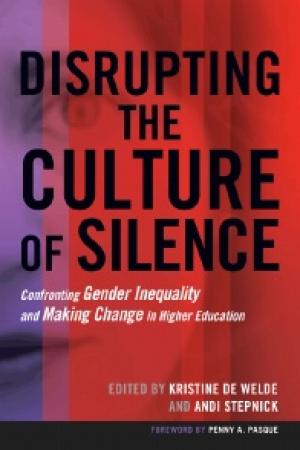
As an African American female associate professor in religious studies, I heard my voice and I felt heard as I read many of the essays in this book. It is intentionally intersectional, addressing race and ethnicity (and to some degree sexual preference) as well as gender. The editors and authors are scholars and administrators in the field of sociology, generally. With this book they interrupt the culture of silence in higher education, which remains the gendered domain of white males where women continue to experience inequality. Case studies, personal narratives and experiences, qualitative (interviews) and quantitative research raise readers’ consciousness about oppressive structures and cultures that impact women in academe. Women have made gains in the academy in terms of their increased presence, but major challenges remain. In this sourcebook each essay builds on existing research and offers suggestions for changing oppressive structures and cultures. The book is divided into five parts, each ending with a case study, and each chapter includes a list of resources. The final chapter offers models for engendering change. The book was born among scholars concerned with bringing together service, scholarship, and activism. While much is said about women faculty in general, a number of essays focus on nonwhite women and specifically black women as the “double minority” in the academy. They are less likely to be mentored, promoted to full professor, granted tenure, and more likely to leave the academy. Part One addresses problematic structures, such as exclusionary practices (lower wages and less upward promotions) that require faculty action to address. Also significant are the horizontal impediments to shattering the glass ceiling and not just the vertical ones (increasing numbers of women). Another example is the uneven, inequitable service burden placed on women and the accompanying fairy tale advice to ‘Just say no to service,’ which only “exacerbates gender-blind sexism in academia.” In the latter case the author suggests that institutions “just don’t ask” unless they are prepared to acknowledge and reward women’s service labor. Part Two discusses the dissonance between structures and cultures. Often structures like institutional quotas and commitments to diversity work in favor of women’s presence, but institutional cultures are resistant, hostile, violent, and unhelpful. Part Three addresses exclusionary cultures, including those that protect disciplinary canons, perpetuate the white male as the “ideal professor,” and value problem portable over problem-based research, which devalue women and the interdisciplinary work of nonwhite women. Part Four discusses “chilly climates,” “contrapower harassment,” incivility, microaggressions, and mobbing that are pervasive and often unchecked. These behaviors have greater negative impact on women with consequences for their physical and emotional well-being and job productivity. One author suggests that women of color consider a “trauma-to-transformation” model that involves redefining self, brain detoxification, sense-making, and reconfiguring the social reality. I highly recommend this book to institutions that value diversity (without which academic excellence does not exist) and desire to create a healthy, productive environment for a truly diverse and representative faculty and administration. I also recommend it for female and male faculty and administrators impacted by cultures of silence and who are interested in disrupting and dismantling those cultures.
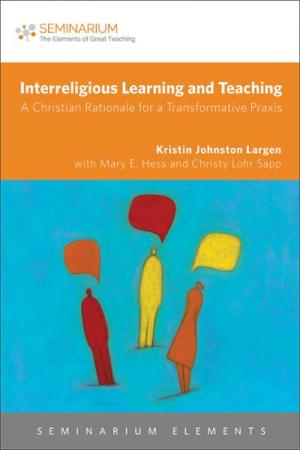
Published in the Fortress Press series, “Seminarium: The Elements of Great Teaching,” this affordable, concise volume is targeted for Protestant seminary professors in particular but will also be of value to those working in Christian higher education and ministry, more generally. The teacher-friendly format features three chapters of text by K. Johnston Largen, punctuated by sequentially numbered, stand-alone text boxes of “Praxis Points” by C. Lohr Sapp, and responses to each chapter and an epilogue by M. E. Hess. The text offers many useful resource references including texts, websites, and video clips. Quick Response codes intersperse the text and the relevant URLs are also provided in footnotes. The first chapter presents four specific examples of interreligious experience relating to Hinduism, Islam, Buddhism, and Judaism, in order to demonstrate the urgent and practical importance of interreligious education and dialogue. The second chapter offers a theological rationale for such learning drawing upon insights of comparative theology. The third chapter suggests expected outcomes and pitfalls, strategies for including interreligious learning within a theological curriculum, and considerations for assessing transformative praxis for students, faculty, and institutions. The format highlights the richness of collaborative work that coheres well throughout the volume yet offers distinct contributions by each authorial voice, modeling the value of dialogue in its overall presentation. Theological references are primarily Lutheran and Roman Catholic but also model dialogue within Christian diversity. A further dialogue which informs all aspects of this text involves pedagogical scholarship, particularly literature associated with adult learners. Each author demonstrates pedagogical depth and writes in a personal, accessible, and occasionally humorous tone. Since the authors emphasize the importance of meeting students where they are and structuring learning opportunities with this in mind, a great deal of attention is paid to resistance and fears some Christian students continue to have toward learning about other religious ways and practices. Readers who are not actively involved in communities or educational settings that reflect this tension and ambivalence may be impatient with the introductory nature of the volume. The authors write to convince and inform those who are beginning or seeking to encourage others to begin this type of transformative praxis.
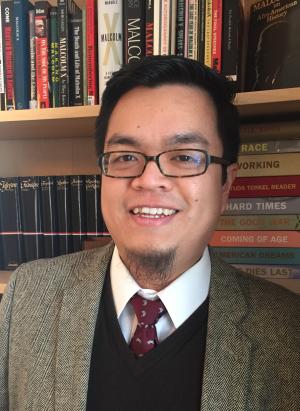
Martin Nguyen Associate Professor Fairfield University Teaching the Qur’an can be a formidable undertaking. Even though the Qur’an is an abiding research interest of mine, it makes teaching the scripture no less challenging. What do I choose to cover and how should I go about it in the course of
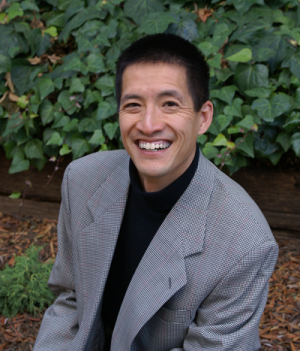
Tat-siong Benny Liew Class of 1956 Professor in New Testament Studies College of the Holy Cross After about six months and fifteen horrible haircuts in the San Francisco Bay area I finally found somebody who could give me a decent haircut, and I became a loyal customer for the

Theological school deans are not just theological leaders for their institution, they must be EDUCATIONAL leaders. That is, they must implement sound educational practices related to curriculum, instruction, supervision, assessment, and administration. While faculty members can focus on course-level and individual student learning assessment, academic deans need to implement program-level assessment in order to evaluate the effectiveness of the school's curricular course of study. There is a variety of ways to assess the effectiveness of the curriculum, and there are several levels of assessment (program-level, course-level, student testing, student projects, etc.).
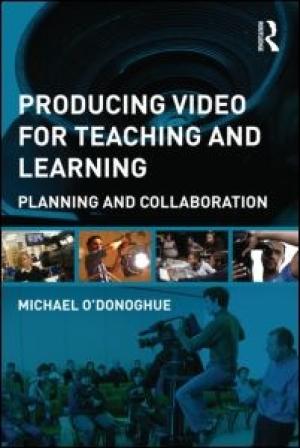
Michael O’Donoghue writes that he has “attempted to create a work which [he] hope[s] is more of an educational thinking and production tool than a how-to-guide”(xi). The book does not quite achieve this particular goal because the author has, in fact, quite nicely done both. His paradigm for pedagogy’s interaction with video and his helpful sections on effective video creation gives the reader a philosophical as well as a practical grounding in the use of video in academic settings. O’Donoghue’s emphasis on teaching and learning ensures that every concept behind video production is linked in some way to a principle in teaching and learning. Making a pitch, or selling an idea for a video allows for review and reflection by teachers and students. Creating a framework for the film gives the educator an opportunity to clearly define learning objectives and outcomes. And a concern over the visual format of the film leads to a discussion on how teaching objectives are presented and received. While this may sound like a rather clumsy construction, O’Donoghue -- in part due to a clean and clear writing style -- pulls it off. As the educational justification is laid out for every aspect of multimedia production using video, readers begin to realize that something else is occurring. They are learning the technical aspects of video production and creation. While video production can seem intimidating, O’Donoghue walks the reader through the process from pitching and scripting to camera usage and post-production. His appendices add to the wealth of direction with an example of a pitch document, an illustrated storyboard, a production course structure, and a short section on lecture capture. But, by far, the best section in this book is the chapter of expert interviews. The author interviewed over twenty people on the use of educational video. He pared those down to the six who appear in chapter five, which is titled “Six of the Best.” And the title does not lie. Among the interviewees is are Sir David Attenborough, of natural history filmmaking renown, and Richard E. Mayer, one of America’s deans of academic multimedia usage. And there is a gem within this gem. The interviews are far ranging, illuminating, and different for each person. However, the final question is the same for them all: “Do you have suggestions for improving educational video productions?” Not only does the reader get very practical tips from these six but the author also gives the response to that question from all twenty-three persons interviewed. There is an embarrassment of riches here. The final chapter, concerning student production of a video, is interesting and practical but could have been longer. The further reading section and bibliography are also helpful and the index is surprisingly robust for such a short book. While the technology used in filming has changed in the last few decades many of the concepts of filming have not. Consequently, I see this philosophically and technically practical book being relevant and extremely useful for many years to come for educators in higher educational contexts.
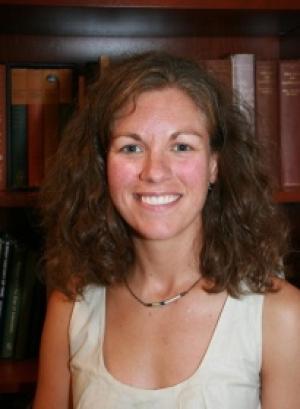
Molly Bassett Associate Professor of Religious Studies Georgia State University A week into the spring semester, the fall term seems like it was forever ago! In my last post, I talked about the informal evaluations my students took, and since writing that post, I have thought about some of the.
Wabash Center Staff Contact
Sarah Farmer, Ph.D
Associate Director
Wabash Center
farmers@wabash.edu